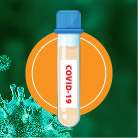≡

Too young for this: Facing Colorectal Cancer at a much younger age

Dr Clara Wu
| Director, Emergency Medicine Centre, and Consultant in Emergency Medicine |
Emergency Cases
Frostbite
When exposed to very cold temperatures, skin and underlying tissues may freeze, resulting in frostbite. The areas most likely to be affected by frostbite are hands, feet, nose and ears.
You can identify frostbite by the hard, pale and cold quality of skin that has been exposed to the cold. As the area thaws, the flesh becomes red and painful. Once you suffer form frostbite, warm up again as soon as possible. Severe case will cause damage on tissue.
Symptoms of frostbite:
- Pale skin or white spots on frostbite area, feeling painful, sometimes may have some blisters
- Afterward, you will feel numb and stiff on the frostbite area
- Severe case will lose painful, the skin will turn purple and necrosis
First aid to patient:
- Get out of the cold area, drink hot water to keep warm
- Warm the affected area by cover with a blankets
- Infiltrate the frostbite area in 37-40°C warm water, in order to make it soft and warm. Be careful of the water temperature, not too high or too low
- Don't rub the affected area.
- Avoid infection, don't use iodine or potent anti-inflammatory agent
- Don't make the blisters broken
- Severe case may need amputation of affected region, seek medical advice as soon as possible
Prevention:
- Wear enough clothes, gloves and earmuffs in cold environment
- Appropriate exercise can generate heat and help blood circulations; especially do some exercise on the fingers and toes








